Detection Line Spectrum of Ship Radiated Noise Based on a New 3D Chaotic System
Abstract
1. Introduction
2. System Model
2.1. The Proposed System Model
2.2. Weak-Signal Detection
3. Weak Signal Detection and Line Spectrum Extraction Based on a Complexity Algorithm
3.1. The Description of SE Complexity Algorithm
3.2. Weak-Signal Detection Based on a Complexity Algorithm
3.3. The Line Spectrum Extraction Based on Complexity
3.4. The Influence Analysis of Noise Signal
4. Circuit Implementation
5. DSP Implementation
6. Conclusions
Author Contributions
Funding
Institutional Review Board Statement
Informed Consent Statement
Data Availability Statement
Conflicts of Interest
References
- Arveson, P.T.; Vendittis, D.J. Radiated noise characteristics of a modern cargo ship. J. Acoust. Soc. Am. 2000, 107, 118–129. [Google Scholar] [CrossRef] [PubMed]
- Lourens, J. Classification of ships using underwater radiated noise. In Underwater Acoustic Data Processing; Springer: Dordrecht, The Netherlands, 1989; pp. 591–596. [Google Scholar]
- Aleksandrov, I. Physical nature of the" rotation noise" of ship propellers in the presence of cavitation. Sov. Phys. Acoust. 1962, 8, 23–28. [Google Scholar]
- Harrison, M. An experimental study of single bubble cavitation noise. J. Acoust. Soc. Am. 1952, 24, 776–782. [Google Scholar] [CrossRef]
- Zhang, Q.; Jaiman, R.K. Numerical analysis on the wake dynamics of a ducted propeller. Ocean Eng. 2019, 171, 202–224. [Google Scholar] [CrossRef]
- Carlton, J. Marine Propellers and Propulsion; Butterworth-Heinemann: Oxford, UK, 2018. [Google Scholar]
- Wang, C.; Sun, S.; Sun, S.; Li, L. Numerical analysis of propeller exciting force in oblique flow. J. Mar. Sci. Technol. 2017, 22, 602–619. [Google Scholar] [CrossRef]
- Lourens, J.G. Passive sonar ML estimator for ship propeller speed. In Proceedings of the 1997 South African Symposium on Communications and Signal Processing, COMSIG’97, Grahamstown, South Africa, 9–10 September 1997. [Google Scholar]
- Huang, N.E.; Shen, Z.; Long, S.R.; Wu, M.C.; Shih, H.H.; Zheng, Q.; Yen, N.C.; Tung, C.C.; Liu, H.H. The empirical mode decomposition and the Hilbert spectrum for nonlinear and non-stationary time series analysis. Proc. R. Soc. Lond. Ser. A Math. Phys. Eng. Sci. 1998, 454, 903–995. [Google Scholar] [CrossRef]
- Hu, G.; Wang, K.; Peng, Y.; Qiu, M.; Shi, J.; Liu, L. Deep Learning Methods for Underwater Target Feature Extraction and Recognition. Comput. Intell. Neurosci. 2018, 2018, 1–10. [Google Scholar] [CrossRef] [PubMed]
- Xu, J.; Huang, Z.; Li, C. Advances m underwater target passive recognition using deep learning. J. Signal Process. 2019, 35, 1460–1475. [Google Scholar]
- Cao, X.; Zhang, X.; Yu, Y.; Niu, L. Deep learning-based recognition of underwater target. In Proceedings of the 2016 IEEE International Conference on Digital Signal Processing (DSP), Beijing, China, 16–18 October 2016. [Google Scholar]
- Chen, T.; Li, M.; Li, Y.; Lin, M.; Wang, N.; Wang, M.; Xiao, T.; Xu, B.; Zhang, C.; Zhang, Z. Mxnet: A flexible and efficient machine learning library for heterogeneous distributed systems. arXiv 2015, arXiv:1512.01274. [Google Scholar]
- Wang, G.; Chen, D.; Lin, J.; Chen, X. The application of chaotic oscillators to weak signal detection. IEEE Trans. Ind. Electron. 1999, 46, 440–444. [Google Scholar] [CrossRef]
- Wang, G.; He, S. A quantitative study on detection and estimation of weak signals by using chaotic Duffing oscillators. IEEE Trans. Circuits Syst. I Fundam. Theory Appl. 2003, 50, 945–953. [Google Scholar] [CrossRef]
- Li, G.; Zhao, K.; Yang, H. A New Method for Detecting Line Spectrum of Ship-Radiated Noise Based on a New Double Duffing Oscillator Differential System; NISCAIR: New Delhi, India, 2020. [Google Scholar]
- Birx, D.L.; Pipenberg, S.J. Chaotic oscillators and complex mapping feed forward networks (CMFFNS) for signal detection in noisy environments. In Proceedings of the IJCNN International Joint Conference on Neural Networks, Baltimore, MD, USA, 7–11 June 1992. [Google Scholar]
- Ahmad, B.; Alsaedi, A.; Alghamdi, B.S. Analytic approximation of solutions of the forced Duffing equation with integral boundary conditions. Nonlinear Anal. Real World Appl. 2008, 9, 1727–1740. [Google Scholar] [CrossRef]
- Cong, C.; Li, X.-K.; Song, Y. A method of detecting line spectrum of ship-radiated noise using a new intermittent chaotic oscillator. J. Phys. 2014, 63, 064301. [Google Scholar]
- Ye, X.; Mou, J.; Wang, Z.; Li, P.; Luo, C. Dynamic Characteristic Analysis for Complexity of Continuous Chaotic Systems Based on the Algorithms of SE Complexity and C0 Complexity. In International Conference on Machine Learning and Intelligent Communications; Springer: Cham, Switzerland, 2017. [Google Scholar]
- Gao, Z.; Liu, X.; Zheng, N. Study on the method of chaotic oscillator in weak signal detection. J. Chongqing Univ. Posts Telecommun. 2013, 25, 440–445. [Google Scholar]
- Wang, M.; Yan, Y.; Zhang, H.-f. Frequency detection of weak signal based on double differential Duffing oscillators. J. Circuits Syst. 2010, 2, 118–121. [Google Scholar]
- Gao, B.; Woo, W.L.; Dlay, S. Single-channel source separation using EMD-subband variable regularized sparse features. IEEE Trans. Audio Speech Lang. Process. 2010, 19, 961–976. [Google Scholar] [CrossRef]
- Li, Y.; Jiao, S.; Geng, B.; Zhou, Y. Research on feature extraction of ship-radiated noise based on multi-scale reverse dispersion entropy. Appl. Acoust. 2021, 173, 107737. [Google Scholar] [CrossRef]
- Xie, D.; Esmaiel, H.; Sun, H.; Qi, J.; Qasem, Z.A. Feature Extraction of Ship-Radiated Noise Based on Enhanced Variational Mode Decomposition, Normalized Correlation Coefficient and Permutation Entropy. Entropy 2020, 22, 468. [Google Scholar] [CrossRef] [PubMed]
- Parathai, P.; Tengtrairat, N.; Woo, W.L.; Abdullah, M.A.M.; Rafiee, G.; Alshabrawy, O. Efficient Noisy Sound-Event Mixture Classification Using Adaptive-Sparse Complex-Valued Matrix Factorization and OvsO SVM. Sensors 2020, 20, 4368. [Google Scholar] [CrossRef] [PubMed]
- Lu, C.; Zeng, X. Combined separation and classification of two types of coexistent ship radiated noise based on trained ideal ratio mask and cepstral features. In INTER-NOISE and NOISE-CON Congress and Conference Proceedings; Institute of Noise Control Engineering: Reston, VA, USA, 2020. [Google Scholar]
- Sprott, J.C. Some simple chaotic flows. Phys. Rev. E 1994, 50, 647–650. [Google Scholar] [CrossRef] [PubMed]
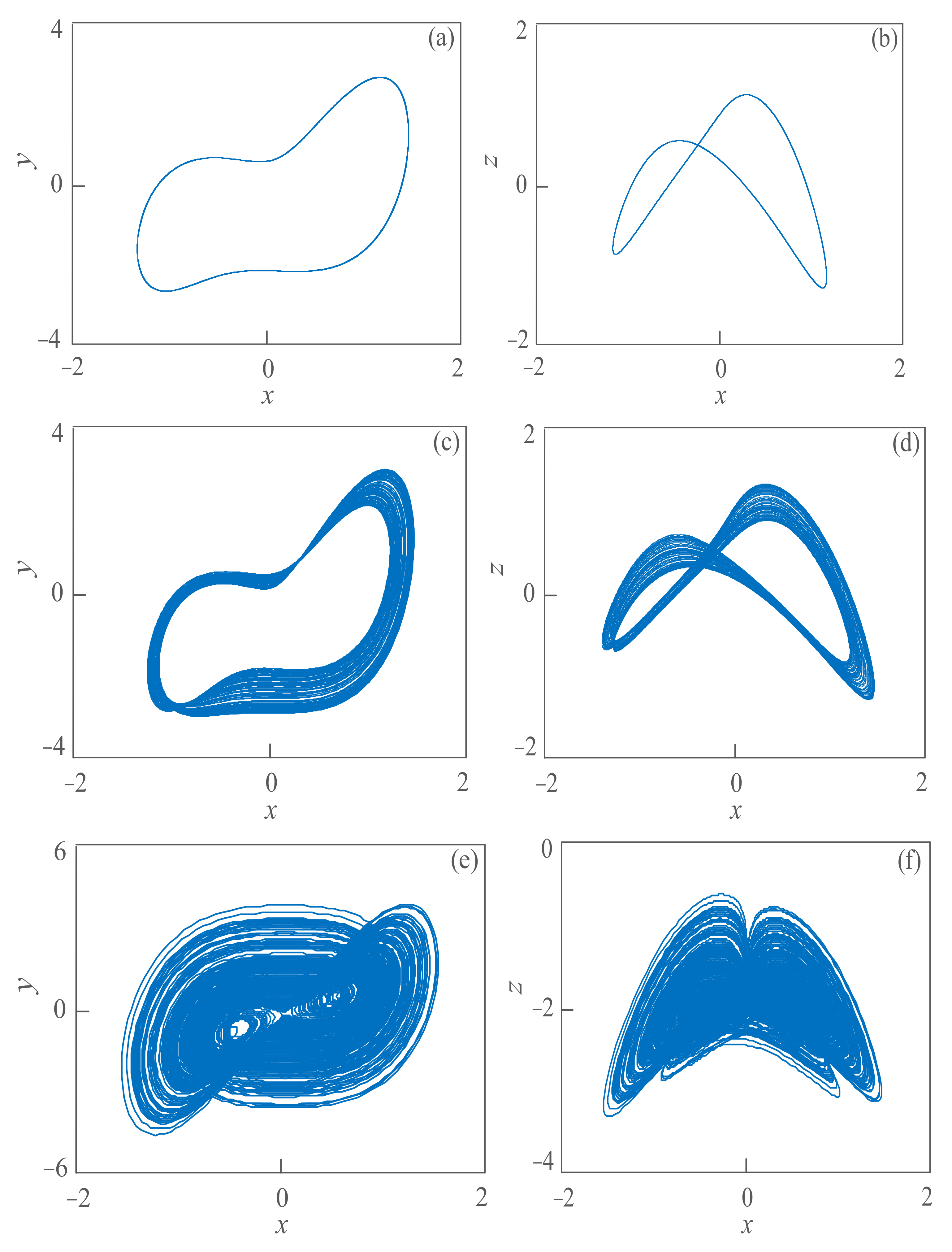
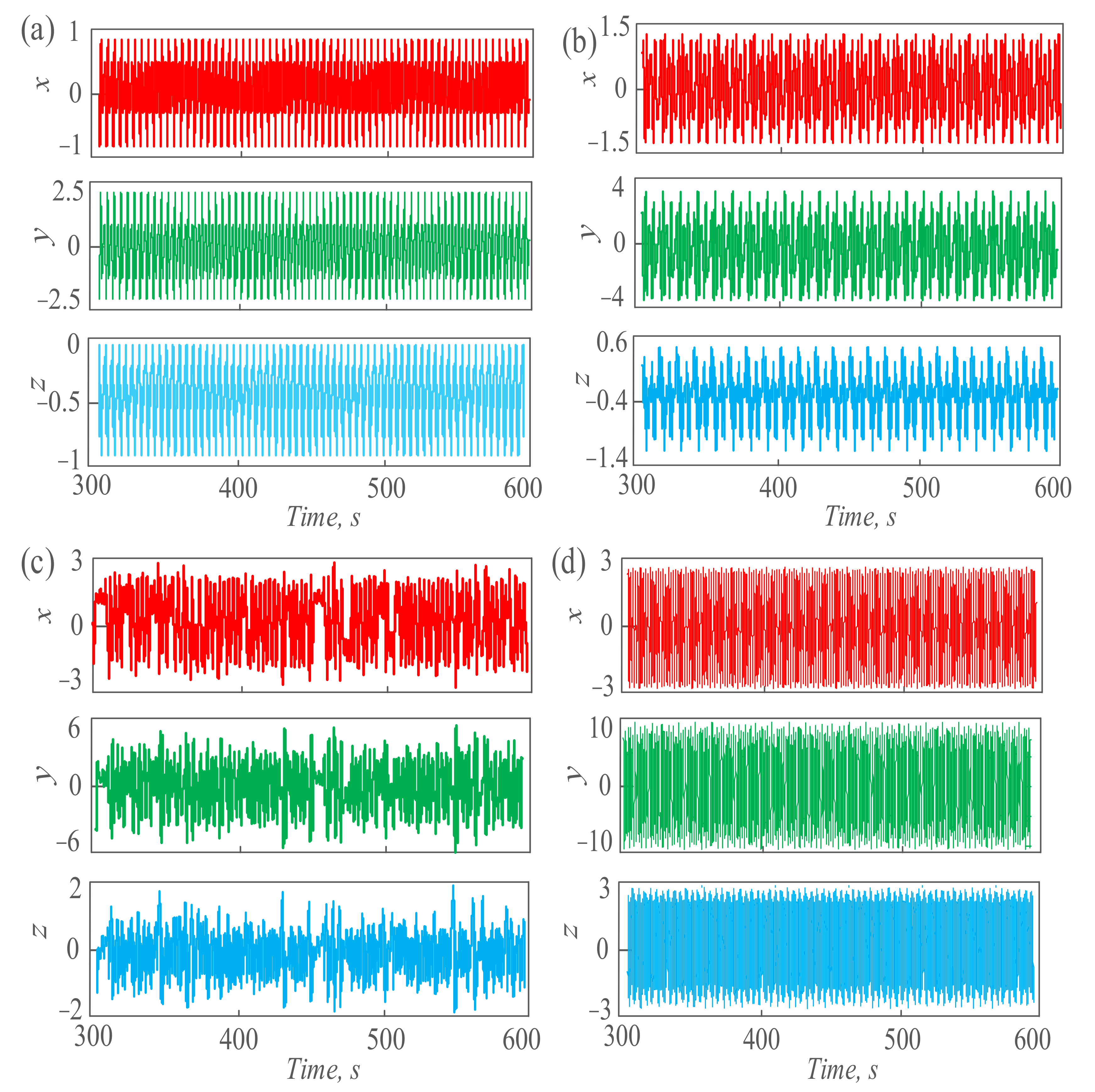

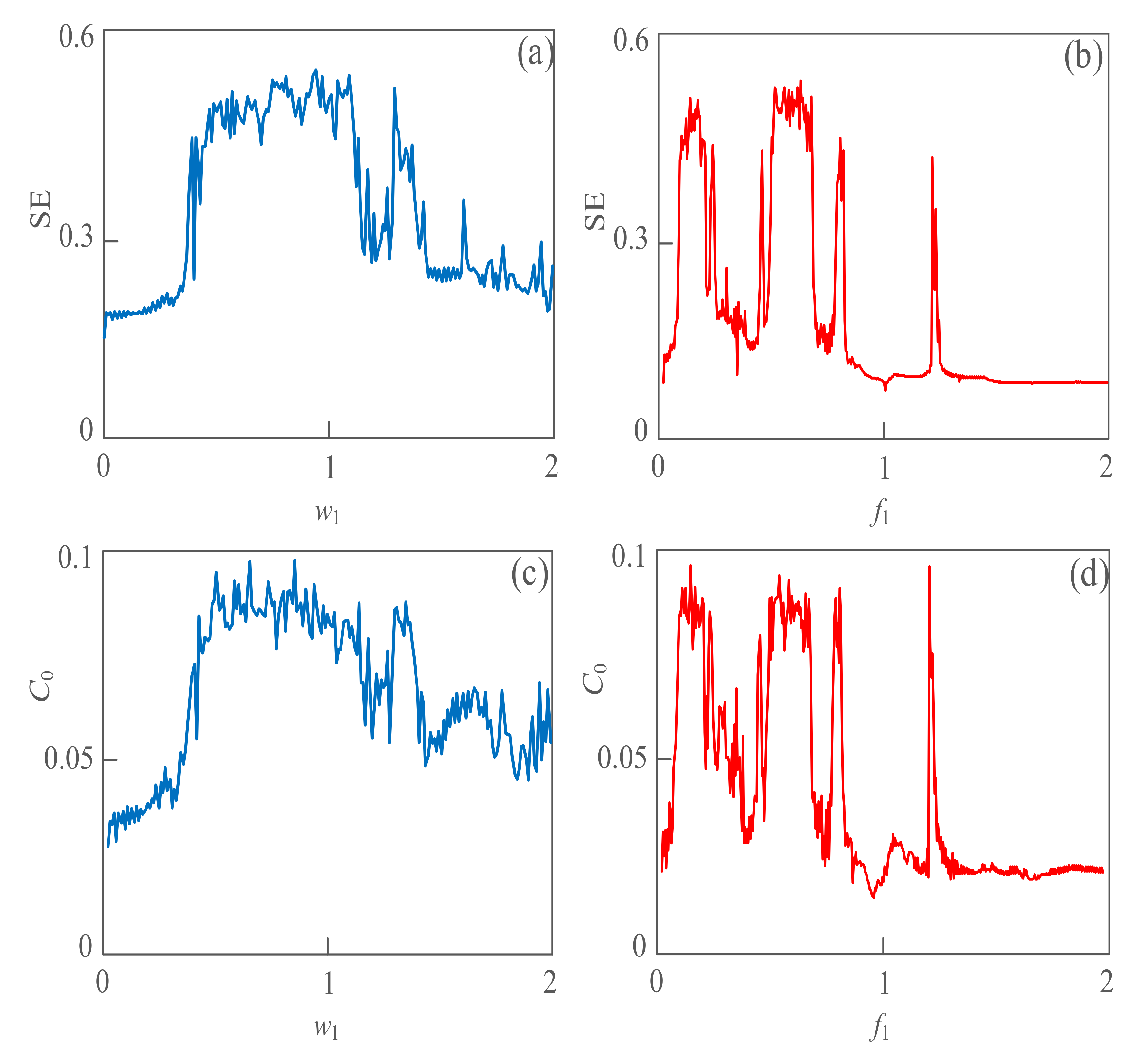


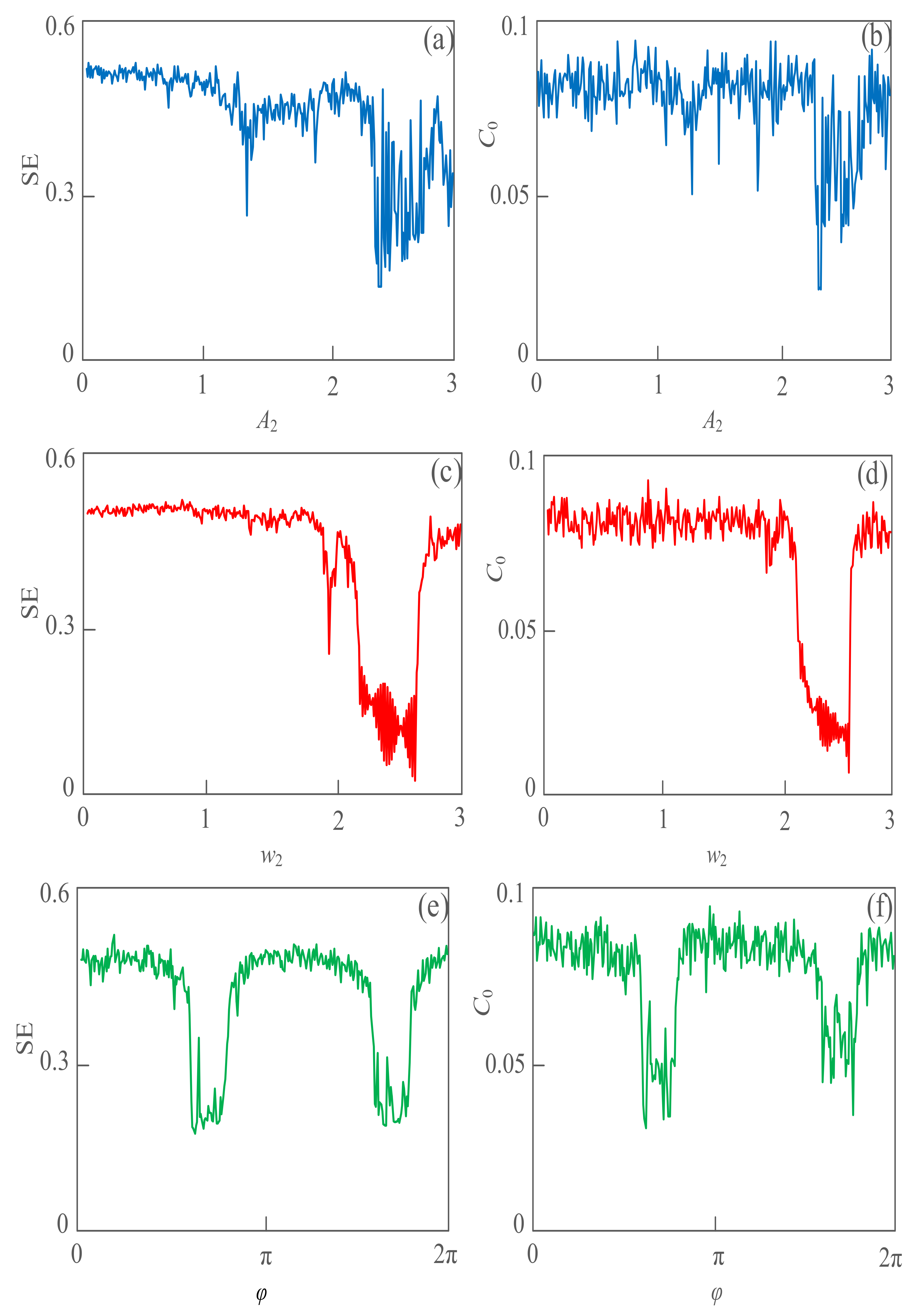
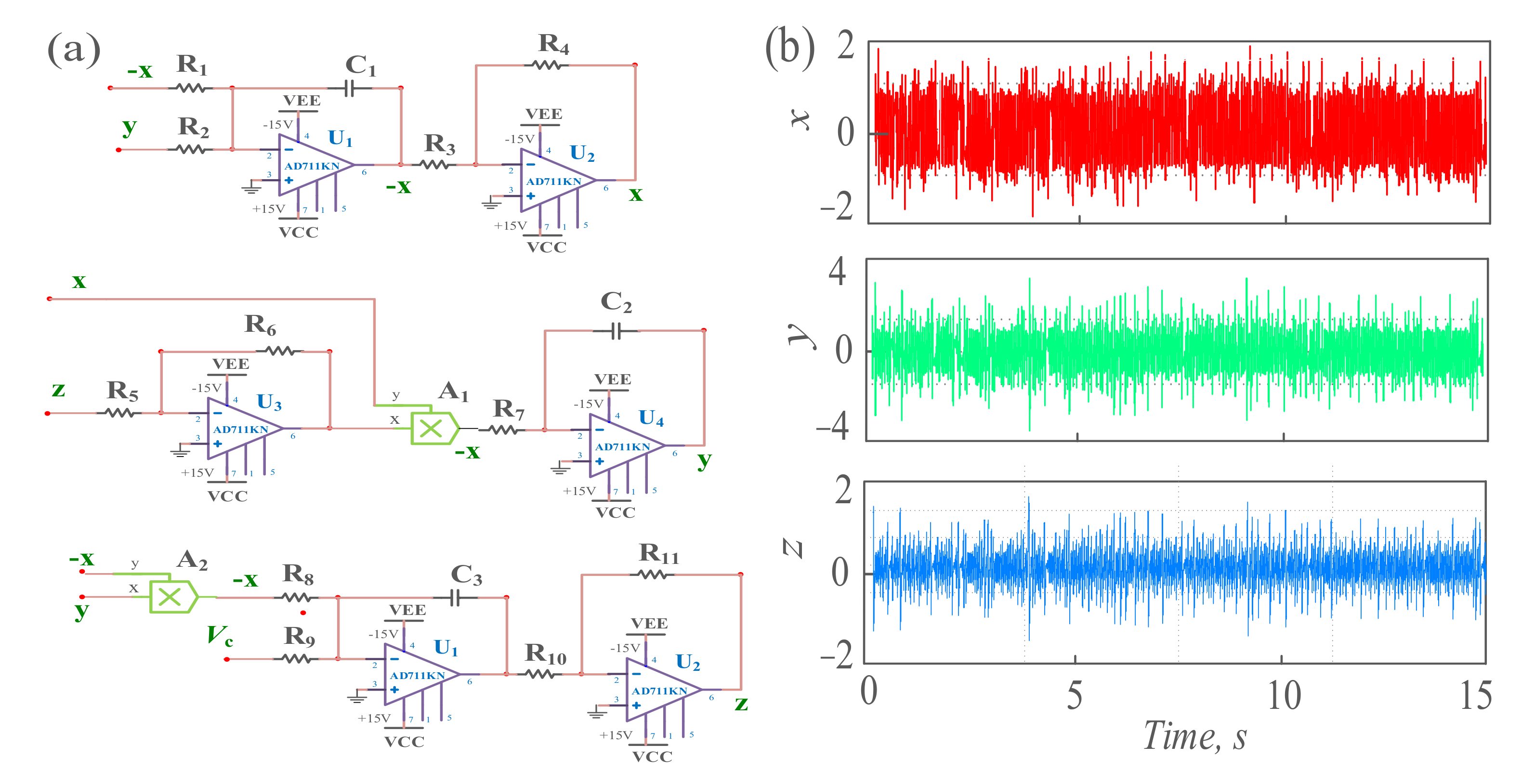
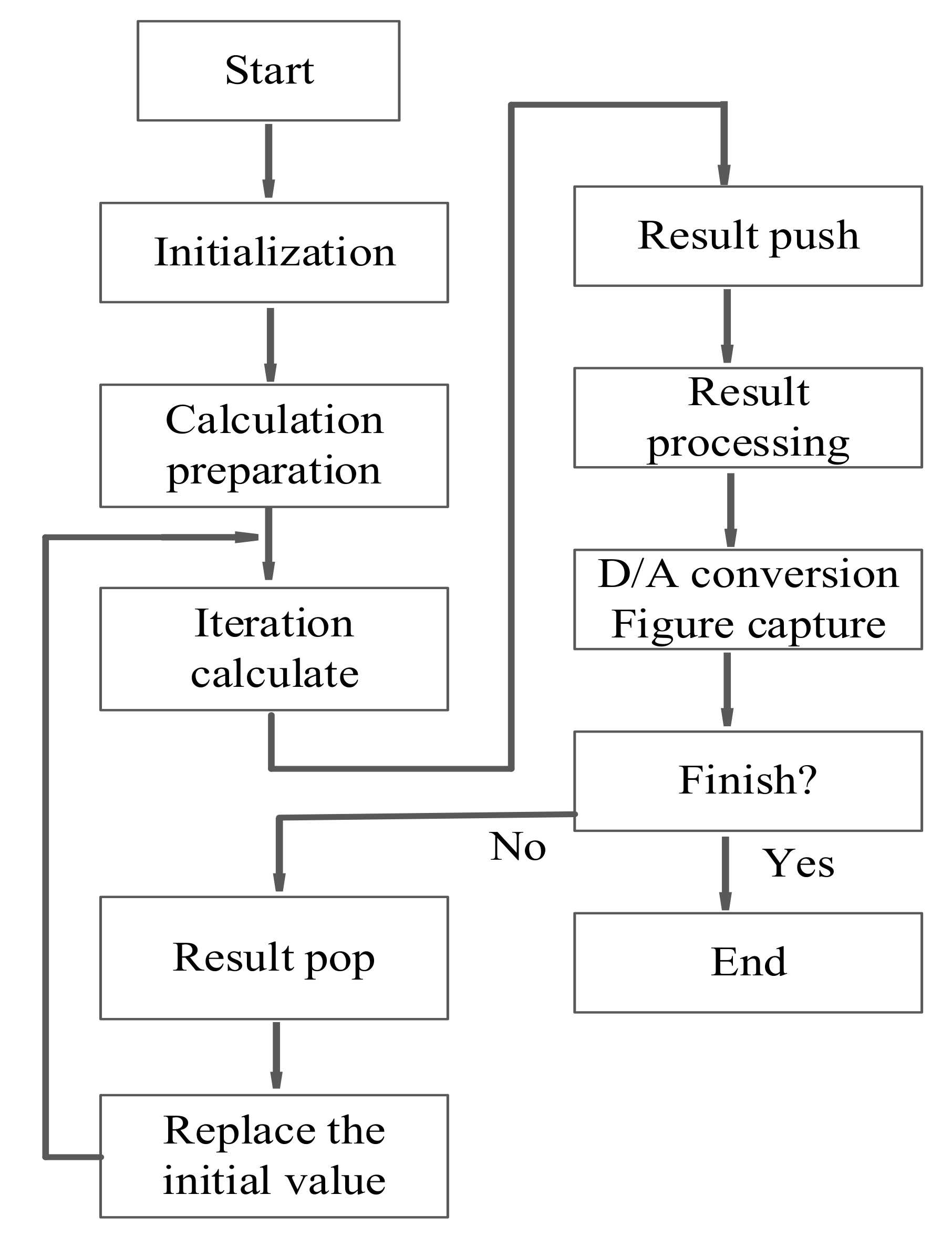
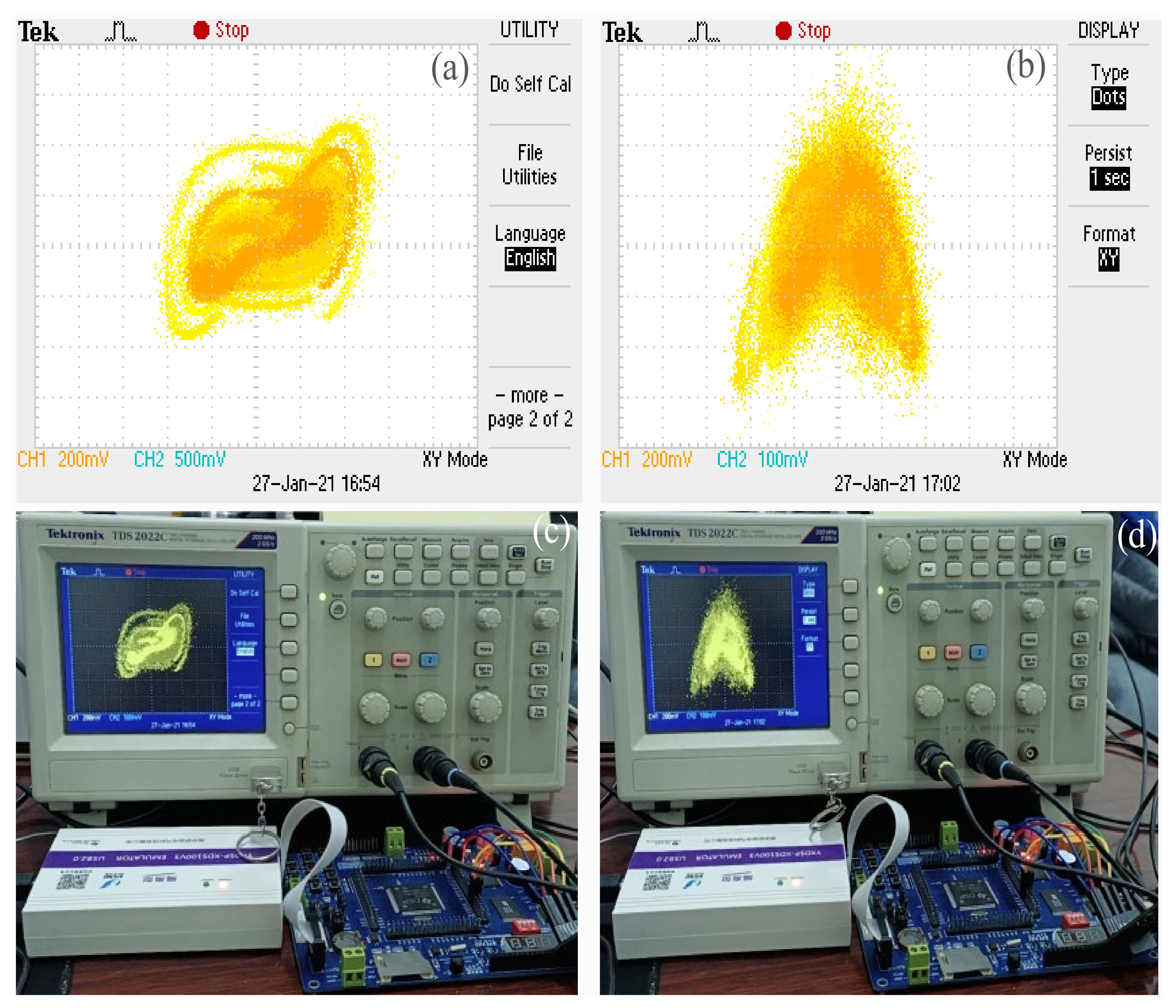
Publisher’s Note: MDPI stays neutral with regard to jurisdictional claims in published maps and institutional affiliations. |
© 2021 by the authors. Licensee MDPI, Basel, Switzerland. This article is an open access article distributed under the terms and conditions of the Creative Commons Attribution (CC BY) license (http://creativecommons.org/licenses/by/4.0/).
Share and Cite
Hu, G.; Wang, K.; Liu, L. Detection Line Spectrum of Ship Radiated Noise Based on a New 3D Chaotic System. Sensors 2021, 21, 1610. https://doi.org/10.3390/s21051610
Hu G, Wang K, Liu L. Detection Line Spectrum of Ship Radiated Noise Based on a New 3D Chaotic System. Sensors. 2021; 21(5):1610. https://doi.org/10.3390/s21051610
Chicago/Turabian StyleHu, Gang, Kejun Wang, and Liangliang Liu. 2021. "Detection Line Spectrum of Ship Radiated Noise Based on a New 3D Chaotic System" Sensors 21, no. 5: 1610. https://doi.org/10.3390/s21051610
APA StyleHu, G., Wang, K., & Liu, L. (2021). Detection Line Spectrum of Ship Radiated Noise Based on a New 3D Chaotic System. Sensors, 21(5), 1610. https://doi.org/10.3390/s21051610





